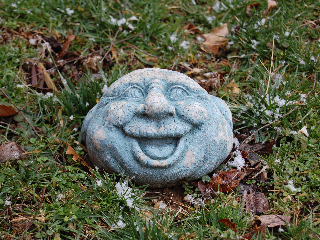
Short of recycling, composting might be the easiest, cheapest, and most practical way to get rid of, and yet still utilize, the excess biodegradable materials around you.
Not only do you save space in the landfill, but the end product of your composting efforts can be put right back into your garden, providing organic fertilizer for your plants.
Composting is not really a new concept; but what is it and where did the idea first come from? Take a walk in the woods and find out; the methods we humans employ to produce our compost are merely an imitation of what Nature has been doing since the beginning of time.
Brush back the top layer of fallen leaves from the forest floor and dig your boot or your fingers through the dark porous decaying organic matter, sometimes called humus. This is the recycling of Nature’s by-products, a mixture of used leaves, tree limbs, grasses, animal bones and deceased bugs, all moistened thoroughly by rainfall and constantly being mixed and stirred by that industrious and humble little being, the earthworm.
Our own efforts at composting enable us to use the by-products of our existence, from potato peelings to grass clippings, to do what Nature does. The ways in which we go about our composting activities are many and varied.
Simple compost bins can be made inexpensively or even free, from the materials that many gardeners already have on hand anyway; a simple box of narrow wooden boards nailed together with spacing between the boards to allow air to pass through, or 4 strong posts set into the ground and surrounded by chicken wire or netting to hold the organic materials to be composted. Or one can purchase any of a number of bins, boxes, rotating drums, barrels, pipes to put the compostable materials into.
And, speaking of that, just what materials can we put into the compost heap? Look around you and start with the closest at hand, things you discard most every day; kitchen scraps, for instance, like coffee grounds, vegetable peelings, used paper towels and napkins, banana peels, peanut hulls, tea bags, egg shells, apple cores, etc.
Walk outdoors, and a whole new world of useable materials appears, grass clippings, fallen leaves, prunings from your roses or other plants, dead and dying leaves from your flower beds, weeds and other undesirable vegetation.
Materials for the compost heap are plentiful, the important thing is to just get started on the process.
Think recycling and think composting! Both these activities increase your awareness of your environment, and you will become more tuned in to the things you actually can save from the landfill.
 Short of recycling, composting might be the easiest, cheapest, and most practical way to get rid of, and yet still utilize, the excess biodegradable materials around you.
Short of recycling, composting might be the easiest, cheapest, and most practical way to get rid of, and yet still utilize, the excess biodegradable materials around you.